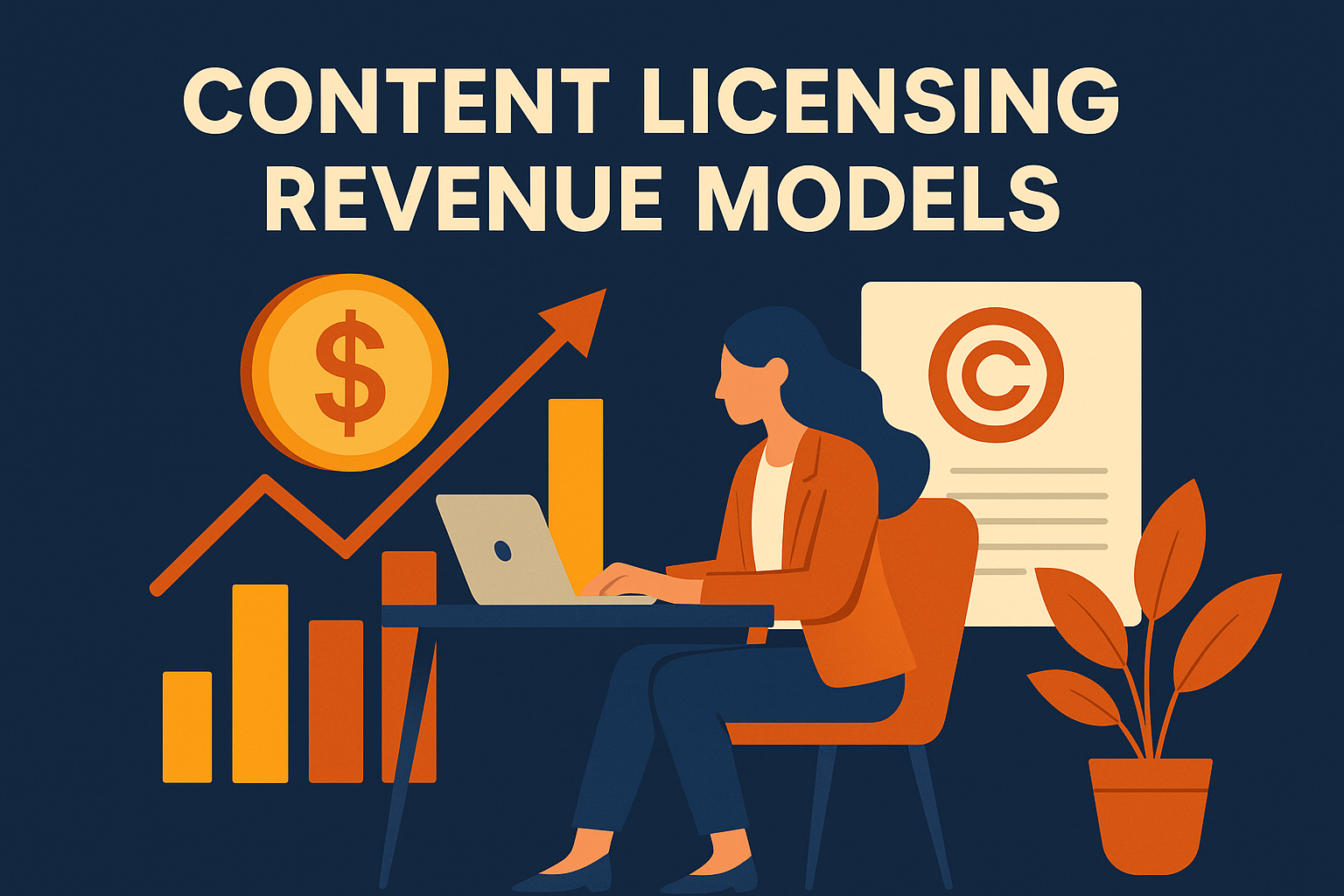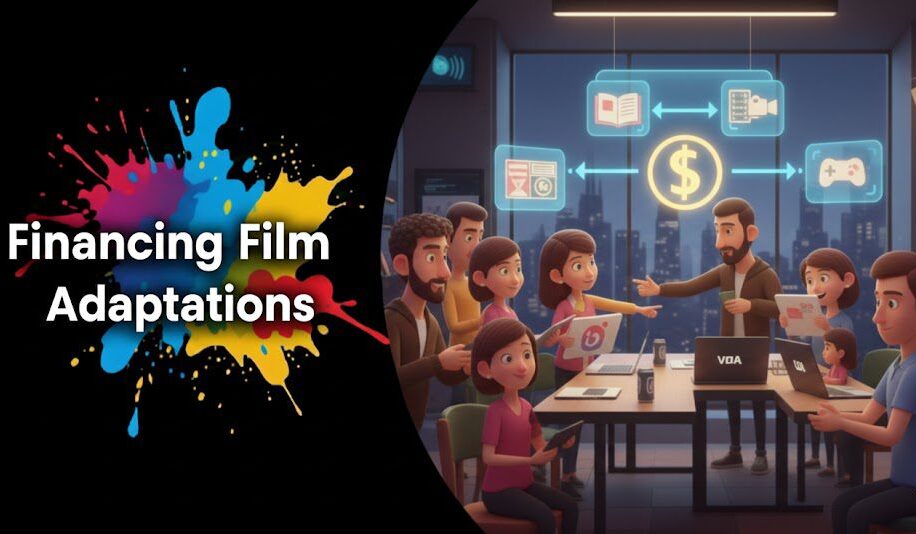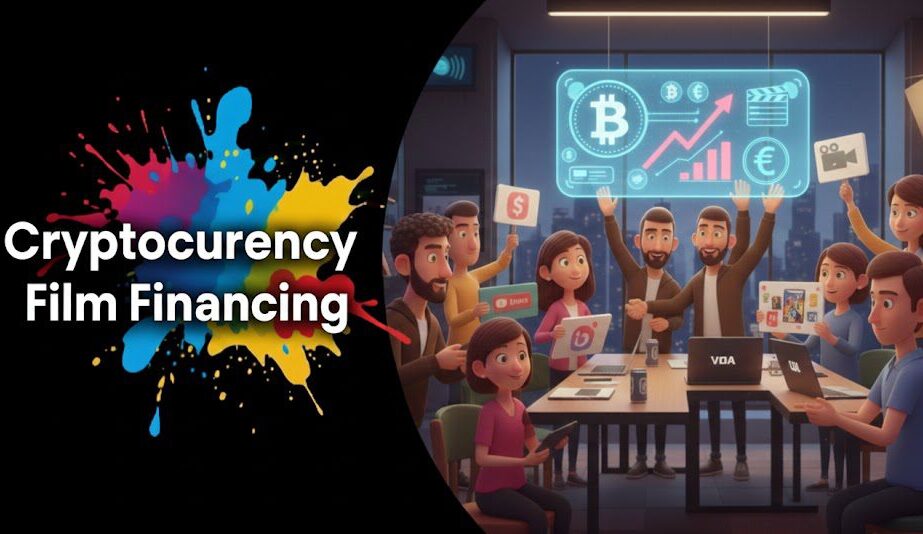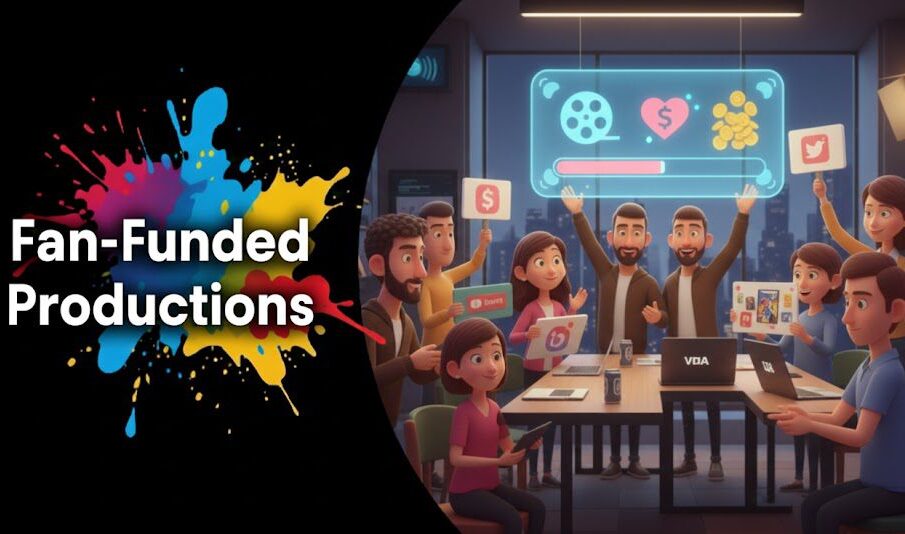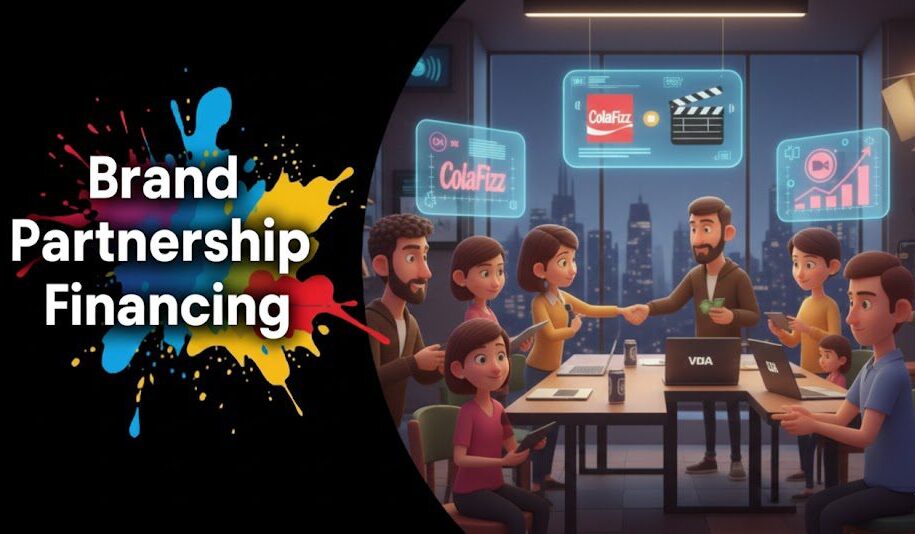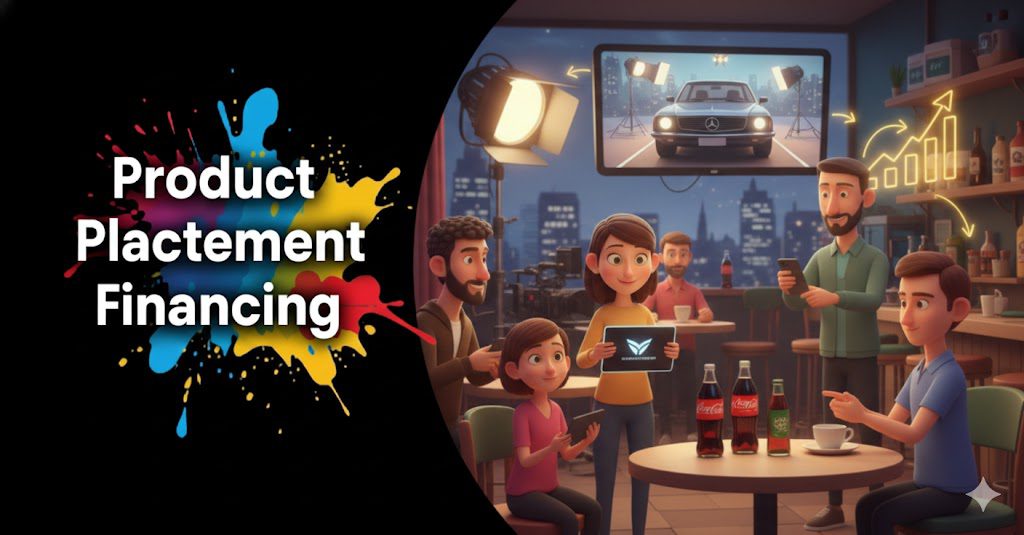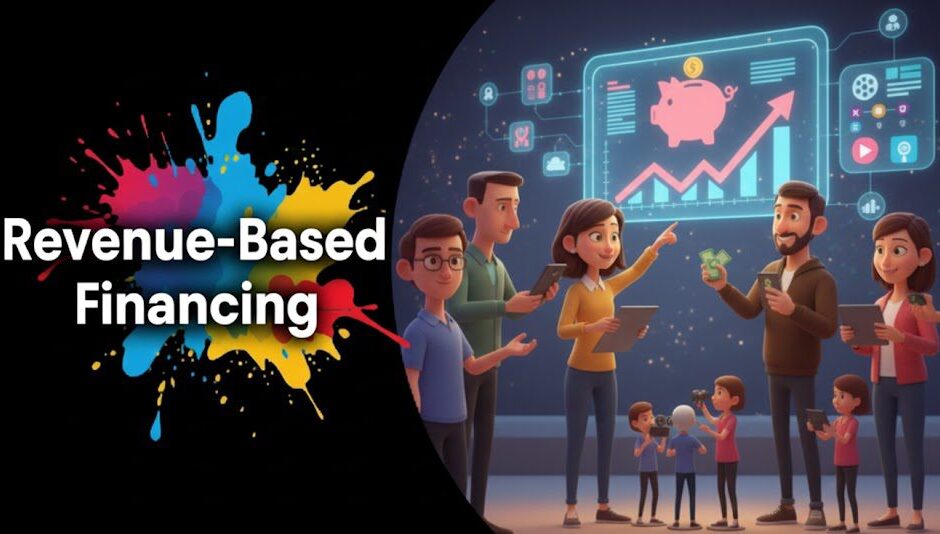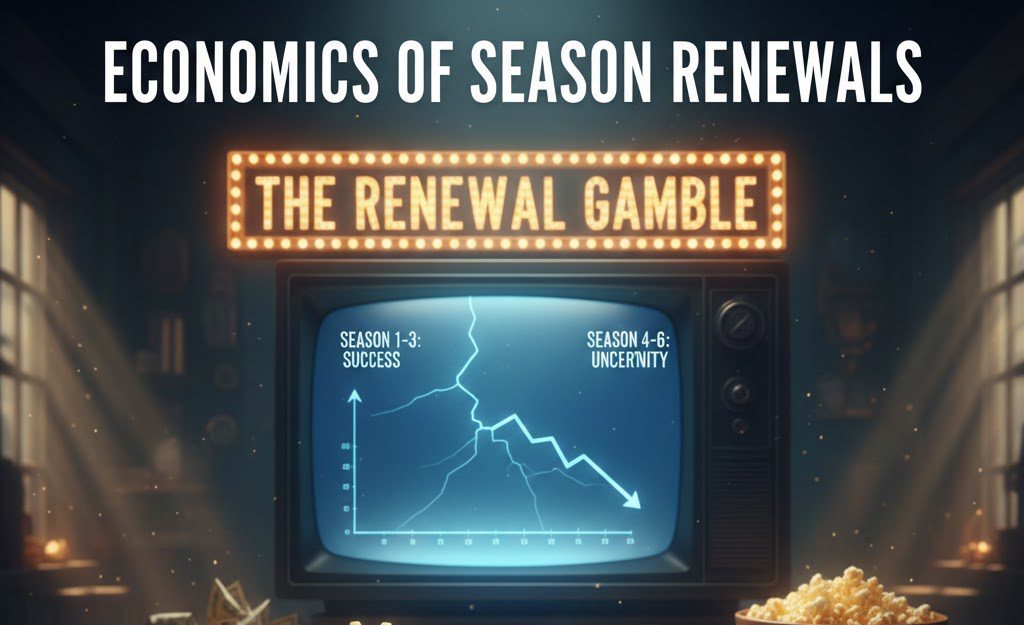Introduction
The world of content licensing revolves around a critical question: how do you put a price on creativity and determine the financial framework for sharing it? Understanding content licensing revenue models and pricing strategies is essential for anyone involved in the business of media – from finance teams and analysts to content sellers aiming to maximize their returns and buyers looking for fair value.
This isn’t just about plucking numbers out of thin air; it involves evaluating various licensing fee structures, assessing TV show valuation or film licensing fees, and choosing the right model, be it flat fee licensing, royalty based licensing, or more complex hybrid approaches. This guide provides a comprehensive overview of how media monetization works through licensing, helping you navigate the financial landscape with greater confidence.
Table of content
- Introduction
- Key-Takeaways
- Understanding Content Licensing Revenue Models: The Basics
- Flat Fee Licensing: Simplicity and Predictability
- Royalty Based Licensing: Sharing in the Success
- Minimum Guarantees (MGs): Balancing Risk and Reward
- Hybrid and Other Licensing Fee Structures
- Key Factors Influencing Content Licensing Pricing and Valuation
- Negotiating Financial Terms: Tips for Buyers and Sellers
- How Platform Type (SVOD, AVOD, TV) Affects Pricing Models
- Conclusion
- FAQs
Key Takeaways
| Financial Aspect | Core Insight | |
|---|---|---|
| Content Licensing Revenue Models | Various structures (flat fee, royalty, MG, revenue share) dictate how licensors are compensated by licensees. | |
| Content Licensing Pricing | Determined by factors like content type, popularity, rights scope, territory value, exclusivity, and market comparables. | |
| Flat Fee Licensing | A fixed sum paid for specified rights, offering predictability for both parties. Common for library content. | |
| Royalty Based Licensing | Licensor earns a percentage of revenue generated by the content on the licensee’s platform. Shares risk and reward. | |
| Minimum Guarantee (MG) | An upfront payment by the licensee, recoupable against future royalties. Mitigates seller risk. | |
| Valuation Factors | Star power, production quality, genre, audience appeal, age of content, and rights package influence price. | |
| Strategic Importance | Choosing the right model and price is crucial for sustainable media monetization and fair partnerships. | |
| Further Learning | For a broader context, see our Definitive Guide to Content Licensing. | |
Determining Fair Film or TV Show Licensing Fees?

Understanding Content Licensing Revenue Models: The Basics
At the heart of every content licensing deal are the financial terms that dictate how money changes hands. Content licensing revenue models are the frameworks that define this compensation. There isn’t a one-size-fits-all approach; the chosen model depends on various factors including the type of content, the platform it’s being licensed to, the negotiating power of the parties, and the desired risk/reward balance. Common structures include a straightforward flat fee licensing arrangement, performance-linked royalty based licensing, or a combination involving a Minimum Guarantee (MG). Understanding these different licensing fee structures is the first step towards effective media monetization through licensing for sellers, and for buyers to structure sustainable content acquisition deals. We will explore how to determine appropriate content licensing pricing across these models.
Why are different revenue models used?
Different models are used to cater to the varied nature of content, platforms, and business objectives:
- Risk Allocation: Some models place more financial risk on the buyer (e.g., high flat fee), while others share the risk (e.g., revenue share).
- Performance Incentives: Royalty-based models incentivize the licensee to promote the content effectively, as both parties benefit from higher viewership/revenue.
- Content Lifecycle Stage: New, high-demand content might command an MG, while older library content is often licensed on a flat fee basis.
- Data Availability: Models like revenue share require transparent reporting and data tracking, which isn’t always feasible for all platforms or content types.
- Predictability vs. Upside: Flat fees offer predictable costs/revenue, while royalties offer potential for higher earnings if the content is a hit.
The goal is to find a model that aligns the interests of both the licensor and licensee.
Who typically proposes the revenue model?
Either party can propose a revenue model, but often the seller (licensor) will have an initial proposal based on how they value their content and their preferred way of doing business. For instance, a major studio licensing a blockbuster film might insist on a significant Minimum Guarantee plus overages. A distributor of library content might be more open to flat fees. However, the final model is almost always a result of negotiation. Buyers, especially large platforms, may also have preferred licensing fee structures they typically work with. Understanding different content licensing revenue models allows both sides to engage in these discussions effectively.
| Model Characteristic | Implication for Licensor (Seller) | Implication for Licensee (Buyer) |
|---|---|---|
| Predictable Revenue/Cost | Guaranteed income (flat fee). | Known content cost, easier budgeting. |
| Performance-Based Upside | Potential for higher earnings if content is popular (royalty). | Payment tied to actual revenue generation. |
| Risk Sharing | Lower upfront risk for buyer (revenue share). | Success depends on platform’s ability to monetize. |
Flat Fee Licensing: Simplicity and Predictability
Flat fee licensing is one of the most straightforward content licensing revenue models. In this structure, the licensee pays the licensor a fixed, pre-agreed sum of money for the rights to use the content for a specific period, in a defined territory, and on particular platforms. Once this fee is paid (either upfront or in installments as per the agreement), the licensee can exploit the content as permitted without owing further payments to the licensor based on performance. This model offers simplicity and financial predictability for both parties involved in determining content licensing pricing.
How does flat fee licensing work?
The process is simple:
- The licensor and licensee negotiate and agree upon a fixed license fee for specific rights (e.g., a two-year SVOD license for a film in a particular country).
- This fee is stipulated in the content licensing agreement, along with the payment schedule.
- The licensee pays the agreed fee.
- The licensee can then exhibit the content according to the licensed rights for the duration of the term. The licensor receives no further payment related to this specific license, regardless of how many people watch the content or how much ad revenue (if any) it generates for the licensee.
This model is often used for library content, content for smaller platforms, or when tracking performance-based payments is impractical. It is a common way to set film licensing fees for older titles.
Pros and Cons of Flat Fee Licensing:
Pros:
- For Licensors: Guaranteed upfront revenue, simpler accounting (no need to track royalties), less risk if content underperforms on the licensee’s platform.
- For Licensees: Predictable content cost, easier budgeting, no ongoing royalty payments or complex reporting.
Cons:
- For Licensors: May leave money on the table if the content becomes a huge hit on the licensee’s platform (no upside participation).
- For Licensees: Risk of overpaying if the content performs poorly and doesn’t generate sufficient viewership or revenue to justify the flat fee.
| Aspect | Advantage | Disadvantage |
|---|---|---|
| For Licensor (Seller) | Guaranteed payment, simple. | No upside from high performance. |
| For Licensee (Buyer) | Fixed cost, predictable. | Pays full fee even if content underperforms. |
Royalty Based Licensing: Sharing in the Success
Royalty based licensing is a content licensing revenue model where the licensor’s compensation is directly tied to the performance or revenue generated by their content on the licensee’s platform. Instead of, or sometimes in addition to, an upfront fee, the licensor receives a percentage of the revenue earned by the licensee from the exploitation of that content. This model inherently aligns the interests of both parties, as both benefit when the content performs well. It’s a common approach in situations where revenue attribution is feasible, such as with some SVOD platforms, AVOD services, or TVOD sales, and plays a significant role in media monetization strategies.
How are royalties calculated and paid?
The calculation of royalties can be complex and must be clearly defined in the licensing agreement:
- Revenue Base: The agreement must specify what revenue the royalty is based on. This could be:
- Net advertising revenue directly attributed to the content (for AVOD).
- A portion of subscription fees allocated based on viewership (for SVOD, though this is complex and less common for pure royalty without MG).
- Per-transaction revenue (for TVOD sales/rentals).
- Royalty Rate: The agreed-upon percentage that the licensor will receive (e.g., 20-50% of net advertising revenue).
- Allowable Deductions: What costs, if any, can the licensee deduct before calculating the licensor’s share (e.g., platform fees, ad serving costs, taxes). This is a critical negotiation point.
- Reporting & Payment Frequency: How often the licensee must report performance data and pay accrued royalties (e.g., quarterly, semi-annually).
Transparent reporting and audit rights for the licensor are essential components of royalty based licensing agreements.
Pros and Cons of Royalty Based Licensing:
Pros:
- For Licensors: Potential for significant upside if the content is successful; aligns licensee’s interest in promoting the content.
- For Licensees: Lower upfront cost (sometimes no upfront fee), payment is tied to actual revenue generation, reducing risk if content underperforms.
Cons:
- For Licensors: Revenue is not guaranteed and can be unpredictable; reliance on licensee’s reporting accuracy and marketing efforts.
- For Licensees: Requires robust tracking and reporting systems; can lead to higher overall payments if content is very successful; complexities in defining and calculating the revenue base.
This model is central to many content licensing pricing discussions where performance can be directly measured.
| Aspect | Advantage | Disadvantage |
|---|---|---|
| For Licensor (Seller) | Potential for high earnings based on success. | Unpredictable income, reliance on licensee. |
| For Licensee (Buyer) | Lower upfront risk, pay based on performance. | Complex reporting, potentially higher total payout. |
Want to Master Media Monetization Through Licensing?

Minimum Guarantees (MGs): Balancing Risk and Reward
A Minimum Guarantee (MG) is a common and often crucial component in content licensing revenue models, particularly for higher-value content or when dealing with established licensors. An MG is an upfront, non-refundable payment made by the licensee to the licensor. This amount is typically “recoupable” against future royalties or revenue shares that the content generates. Essentially, the licensor gets a guaranteed payment, and the licensee only pays additional royalties once the licensor’s share of generated revenue exceeds the initial MG amount. This model strikes a balance, mitigating risk for the seller while still allowing both parties to share in potential upside. MGs are a key factor in TV show valuation and setting film licensing fees for premium titles.
How do MGs work in conjunction with royalties?
Here’s the typical flow:
- The licensor and licensee agree on an MG amount and a royalty/revenue share structure (e.g., an MG of $50,000, with the licensor receiving 30% of net revenues).
- The licensee pays the $50,000 MG to the licensor, usually upfront or in installments.
- As the content generates revenue on the licensee’s platform, the licensor’s 30% share is calculated.
- The licensor does not receive additional royalty payments until their accumulated 30% share surpasses the $50,000 MG already paid. This is the “recoupment” phase.
- Once the licensor’s share of revenue exceeds $50,000, they begin to receive “overages” – the actual royalty payments beyond the MG.
For example, if the content generates $200,000 in net revenue, the licensor’s 30% share is $60,000. Since they already received $50,000 as an MG, they would then receive an additional $10,000 in overages.
When are MGs typically used?
MGs are commonly used in several scenarios:
- Premium/High-Demand Content: For new feature films, popular TV series, or content with significant buzz, licensors can command MGs.
- Established Licensors/Studios: Major studios or distributors often require MGs as a standard part of their licensing fee structures.
- Risk Mitigation for Licensors: Guarantees some upfront revenue, regardless of how the content ultimately performs.
- To Secure Exclusivity: Licensees may offer MGs to secure exclusive rights for desirable content.
- New Platforms/Markets: Licensors might require MGs when licensing to new or unproven platforms where performance is uncertain.
The size of the MG is a major negotiation point in content licensing pricing.
| Aspect of MG | Benefit for Licensor (Seller) | Consideration for Licensee (Buyer) |
|---|---|---|
| Upfront Payment | Guaranteed income, reduces risk. | Higher initial cash outlay. |
| Recoupment | Ensures initial revenue covers the guarantee. | Only pays overages if content performs well beyond MG level. |
| Risk Sharing | Seller gets guaranteed minimum; buyer’s risk capped at MG if content fails. | Shares upside if content is very successful. |
Hybrid and Other Licensing Fee Structures
While flat fees, royalties, and MGs are common pillars of content licensing revenue models, the industry also utilizes various hybrid structures and other, more nuanced approaches to media monetization. These alternative or combined models aim to provide greater flexibility, address specific circumstances, or align incentives in unique ways. As the media landscape continues to evolve, particularly with digital platforms, these creative licensing fee structures are becoming increasingly prevalent in discussions around content licensing pricing.
Revenue Share Agreements
A Revenue Share model is similar to royalty-based licensing but can be structured more broadly. The licensor receives an agreed-upon percentage of specific revenue streams generated by the licensee in connection with the content. This is very common for TVOD (Transactional VOD) platforms, where the licensor might get 50-70% of each rental or purchase fee. It can also apply to channel carriage fees on cable/satellite platforms or even a share of overall platform subscription revenue in some complex SVOD deals. Clear definitions of the “revenue” being shared and transparent reporting are critical.
Barter Deals / Advertising Inventory Share
In a barter deal, instead of a cash license fee, the licensor receives advertising inventory (commercial spots) within or around the programming on the licensee’s platform (typically a broadcaster or AVOD service). The licensor can then sell this ad inventory themselves.
- This can be attractive for licensors with strong ad sales capabilities.
- It allows licensees to acquire content with lower or no upfront cash outlay.
- The value hinges on the desirability and sell-through rate of the ad inventory.
This is a more specialized approach within content licensing revenue models.
Package Deals and Volume Discounts
Often, buyers don’t license just one title but a package of films or a library of TV episodes. In such cases:
- Package Pricing: A single price might be negotiated for the entire bundle, often at a per-title or per-episode rate that is lower than if licensed individually.
- Volume Discounts: The more content a licensee acquires, the better the per-unit price they might receive.
This benefits sellers by licensing more of their catalog and buyers by achieving cost efficiencies. These considerations heavily influence film licensing fees and overall TV show valuation for libraries.
| Alternative Model | Key Feature | Common Application |
|---|---|---|
| Revenue Share | Licensor gets a direct percentage of specific revenues. | TVOD platforms, channel distribution. |
| Barter / Ad Share | Licensor receives advertising spots instead of cash fee. | Broadcast TV, AVOD platforms. |
| Package Deals | Multiple titles licensed together, often at a discounted per-unit rate. | Library sales, acquiring multiple seasons of a series. |
Key Factors Influencing Content Licensing Pricing and Valuation
Determining the “right” price for a piece of content in a licensing deal is one of the most challenging aspects of content licensing pricing. It’s rarely a fixed science but rather a complex calculation influenced by a multitude of factors. Both buyers and sellers need to understand these variables to effectively engage in TV show valuation, set appropriate film licensing fees, and negotiate fair terms. These factors collectively shape the perceived and actual market value of the content within specific licensing fee structures.
Key Valuation Drivers:
- Content Type and Genre: Feature films (especially new releases) often command higher prices than library TV series or documentaries. Popular genres (e.g., action, kids’ animation, established drama franchises) may also be valued higher.
- Star Power and Talent: Well-known actors, directors, or creators can significantly increase a content’s licensing value.
- Production Quality and Budget: Higher production values generally correlate with higher perceived value, though this isn’t always linear with budget.
- Past Performance and Brand Recognition: Existing box office success, TV ratings, streaming numbers, awards, or established brand/franchise appeal (e.g., a sequel or spin-off) are strong indicators of value.
- Age of Content (Recency): Newer content typically licenses for more than older “library” titles, although classic films and evergreen series can retain strong value.
- Uniqueness and Scarcity: Content that is highly original, difficult to replicate, or for which there is high demand and limited supply will be priced higher.
- Scope of Rights Granted: The broader the rights (e.g., more platforms, longer term, larger territory, exclusivity), the higher the price. An exclusive content license is always more valuable.
- Territory Value: Larger, wealthier territories or those with high audience affinity for the content type will command higher fees.
- Platform Type and Reach: Licensing to a major global SVOD platform will typically yield higher fees than licensing to a small, niche AVOD service.
- Market Comparables (“Comps”): What similar pieces of content have recently licensed for in similar deals in the same territory provides crucial benchmarks. This is where platforms like Vitrina can offer valuable market intelligence.
| Valuation Factor | Impact on Pricing | Example |
|---|---|---|
| Star Power / Recognizable IP | Increases value significantly. | A film with A-list actors or based on a bestselling book. |
| Exclusivity and Breadth of Rights | Higher exclusivity and more rights lead to higher fees. | Worldwide exclusive SVOD rights vs. non-exclusive AVOD for one country. |
| Territory Size & Market Potential | Larger/wealthier markets command higher prices. | Licensing for the USA vs. licensing for a smaller European country. |
| Recency / Age of Content | Newer content is generally more expensive. | A first-window license for a new series vs. a library title from 10 years ago. |
Negotiating Financial Terms: Tips for Buyers and Sellers
Negotiating the financial aspects of a content licensing agreement is a critical skill for both buyers and sellers. This is where content licensing pricing meets the art of the deal. Sellers aim to maximize their media monetization, while buyers seek to acquire content at a cost that allows for a healthy return on investment. Understanding each other’s perspectives and employing effective strategies can lead to mutually beneficial outcomes rather than stalemates. Key areas include the license fee itself, payment schedules, and how different licensing fee structures are applied.
Tips for Sellers (Licensors):
- Know Your Content’s Value: Research market comps, understand your unique selling points (USPs), and be prepared to justify your asking price. Highlight past successes or strong indicators of future performance.
- Set a Realistic Floor Price: Determine your minimum acceptable fee before entering negotiations.
- Anchor High (Reasonably): Start with an asking price that allows room for negotiation downwards.
- Bundle Strategically: Offer packages of content that might include a mix of premium and library titles to increase overall deal value.
- Be Flexible on Models: While you might prefer a high MG, be open to discussing performance-based elements if it helps close a deal with a promising partner.
- Clearly Define Revenue for Royalty Deals: Ensure definitions of “Net Receipts” or other revenue bases are clear and protect your interests.
Tips for Buyers (Licensees):
- Thoroughly Evaluate ROI Potential: Estimate the potential viewership, subscriber acquisition/retention, or ad revenue the content could generate before making an offer.
- Understand Your Budget Constraints: Know how much you can afford and stick to it.
- Challenge Assumptions: Don’t just accept the seller’s initial valuation; do your own analysis.
- Negotiate More Than Just Price: If the fee is high, try to negotiate other valuable terms like longer license duration, broader rights, marketing support from the licensor, or more favorable payment terms.
- Seek Performance-Based Elements: If unsure about content performance, try to shift some risk to the seller with royalty-based components or back-ended payments.
- Request Transparency: For royalty deals, ensure clear reporting obligations and audit rights.
| Negotiation Party | Key Objective | Common Tactic |
|---|---|---|
| Seller (Licensor) | Maximize revenue and content value. | Highlight USPs, justify price with data/comps, bundle content. |
| Buyer (Licensee) | Acquire desired content at optimal ROI. | Challenge valuation, negotiate non-price terms, seek performance-based deals. |
How Platform Type (SVOD, AVOD, TV) Affects Pricing Models
The type of platform acquiring the content significantly influences the preferred content licensing revenue models and pricing strategies. An SVOD service like Netflix has different economic drivers and audience expectations than an ad-supported AVOD platform or a traditional linear TV broadcaster. Understanding these differences is key for both sellers targeting specific platforms and buyers operating them. The valuation of film licensing fees or TV show valuation will vary greatly depending on where and how the content will be consumed.
SVOD Platforms:
Often prefer to pay substantial upfront license fees or MGs, especially for exclusive, high-profile content that can drive subscriptions. While some SVOD deals might have back-end participation for mega-hits, the primary model often leans towards securing rights for a fixed cost for a defined term.
AVOD Platforms:
More commonly operate on revenue-share models (sharing ad revenue with the licensor) or lower flat fee licensing for library content. Since their revenue is directly tied to advertising against viewership, sharing that ad revenue is a natural fit. MGs might be less common unless for highly sought-after exclusive content.
Linear TV (Broadcast/Cable):
Traditionally used flat fee licensing per episode or for a package of films, often based on the number of permitted runs and the channel’s reach/ratings. For premium pay-TV channels, fees can be substantial. Barter deals (exchanging ad inventory for content) also occur.
TVOD Platforms:
Almost exclusively use a revenue share model, where the platform and the rights holder split the revenue from each rental or purchase transaction.
The choice of licensing fee structures is thus heavily dependent on the platform’s own business model and how it generates revenue from the content.
| Platform Type | Primary Revenue Source | Common Licensing Model(s) |
|---|---|---|
| SVOD (e.g., Netflix, Disney+) | Subscription Fees | Flat Fee, Minimum Guarantee (MG), occasionally buyouts. |
| AVOD (e.g., Tubi, Pluto TV) | Advertising | Revenue Share (Ad-based), Lower Flat Fees. |
| Linear TV (Broadcast/Cable) | Advertising, Subscription Fees | Flat Fee per episode/run, Barter. |
| TVOD (e.g., Apple iTunes) | Per-Transaction (Rent/Buy) | Revenue Share. |
Conclusion
Navigating the financial intricacies of content licensing revenue models and pricing is a critical skill for achieving success in the media and entertainment industry. From understanding the fundamental differences between flat fee licensing and royalty based licensing, to appreciating the strategic importance of Minimum Guarantees and the myriad factors that influence film licensing fees and TV show valuation, both buyers and sellers must approach these negotiations with knowledge and strategic foresight. The goal is always to strike a balance that fairly compensates creators while allowing platforms to build sustainable businesses through compelling media monetization strategies.
The choice of licensing fee structures and the final agreed price will always depend on the specific content, the parties involved, and the prevailing market conditions. As the media landscape continues to evolve, so too will the models and strategies for valuing and licensing content. For a deeper understanding of the entire licensing ecosystem, we encourage you to explore our Definitive Guide to Content Licensing.
Ready to optimize your content’s financial strategy or find fairly priced content? Discover how Vitrina provides market intelligence and connections to support your content licensing revenue goals.
Frequently Asked Questions
A “license fee” (often a flat fee licensing model) is a fixed sum paid upfront for the right to use content. A “royalty” is a payment made to the licensor based on a percentage of revenue or usage generated by the content after its release (royalty based licensing). A Minimum Guarantee (MG) is an upfront payment that is recoupable against future royalties.
For theatrical releases, distributors typically pay the producer/rights holder an MG against a percentage of box office receipts (e.g., the distributor keeps a distribution fee, deducts expenses, and then splits the remaining profit with the producer based on an agreed percentage). Terms vary greatly based on the film’s potential and the distributor’s power.
Yes, absolutely. The value of content often changes. For example, TV show valuation for first-window rights (new season) will be much higher than for library rights (older seasons) years later. However, a classic film might see its licensing value increase again over time due to renewed interest or anniversaries. Market demand for specific licensing fee structures also evolves.
Yes. Major studios often have more leverage to demand higher MGs and favorable terms due to their established brands and consistent output of hits. Independent producers might need to be more flexible with their content licensing revenue models and pricing, perhaps opting for lower upfront fees with better back-end participation, or focusing on finding passionate niche buyers. However, a unique, high-quality independent film can still command strong prices.


